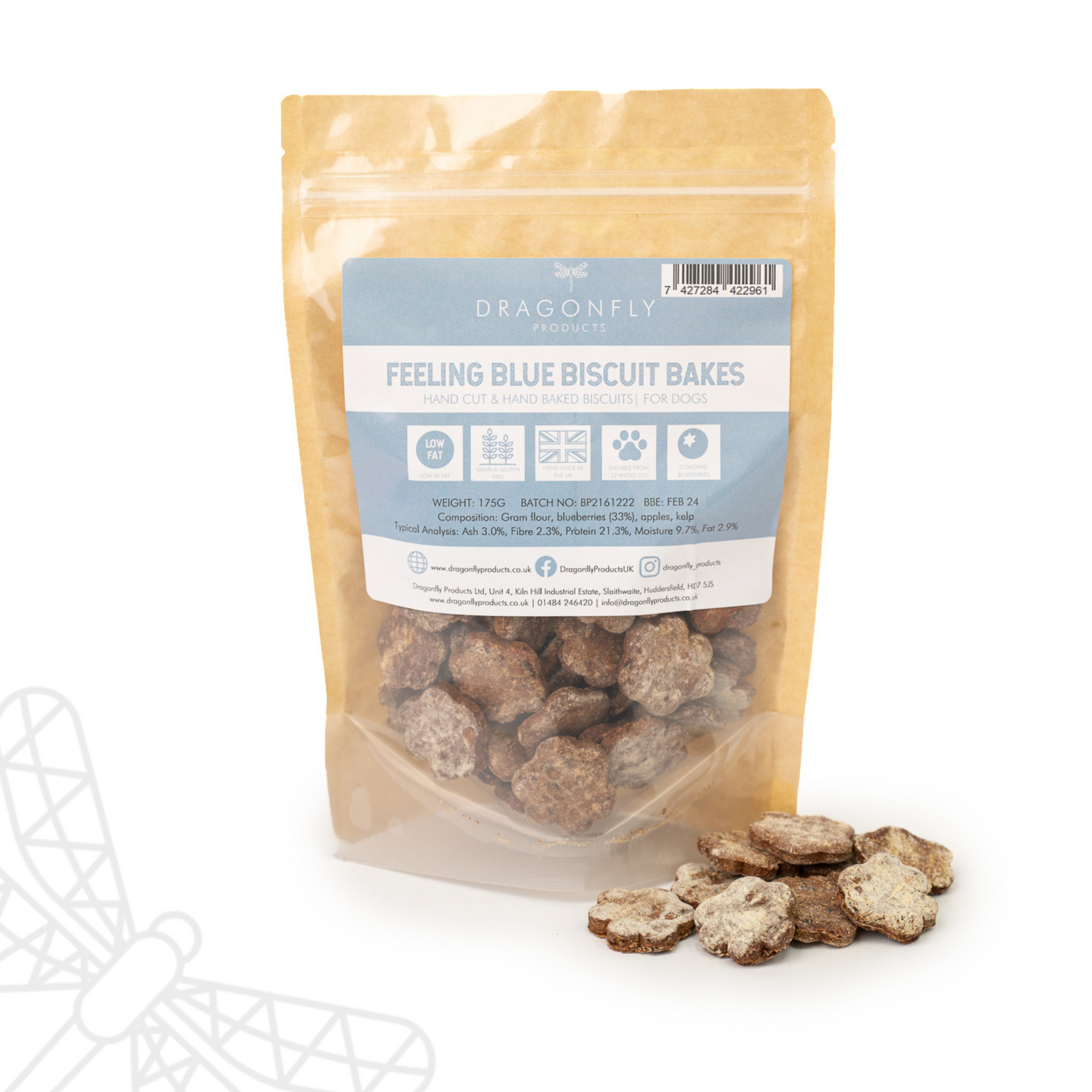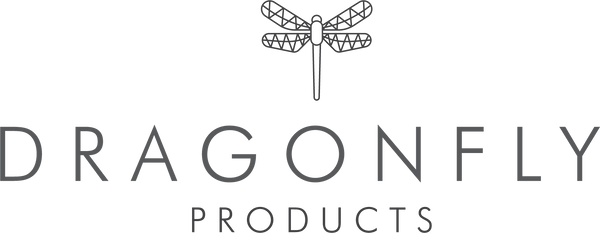
What is good fibre for dogs?
Fibre, often referred to as dietary fibre or roughage, is a type of carbohydrate found in plant-based foods that the body cannot digest or absorb. Unlike other nutrients, such as proteins, fats, and carbohydrates, which are broken down and absorbed by the body, fibre remains largely intact as it passes through the digestive system. Instead of being digested, fibre plays a crucial role in regulating digestion and promoting overall gastrointestinal health.
Table of Contents
- Why do dogs need fibre?
- What types of fibre are there?
- What sources of fibre can I feed my dog?
- How do I know if my dog needs more fibre?
Why do dogs need fibre?
Dogs need fibre in their diet for many reasons. Fibre is a key part of a balanced, nutritional diet to keep your dog in optimum health.
Digestive Health: Fibre aids in maintaining healthy digestion by adding bulk to stools, regulating bowel movements, and preventing constipation or diarrhoea.
Weight Management: Fibre promotes satiety, reducing overeating and aiding in weight management by helping dogs feel full without consuming excess calories.
Blood Sugar Regulation: Soluble fibre slows down the absorption of glucose into the bloodstream, helping regulate blood sugar levels, which is particularly beneficial for dogs with diabetes or those at risk.
Gut Health: Fibre supports the growth of beneficial gut bacteria, contributing to a healthy gastrointestinal tract and overall gut health.
Prevention of Gastrointestinal Disorders: Including fibre in their diet can help manage certain gastrointestinal disorders such as irritable bowel syndrome (IBS) or colitis, by promoting regularity and reducing inflammation in the digestive tract.
Adding Bulk to Stools: Fibre absorbs water in the digestive tract, increasing the bulk of stools. This bulk stimulates the muscles of the intestines, promoting regular bowel movements and preventing constipation.
Regulating Bowel Movements: Fibre helps regulate the speed at which food moves through the digestive tract. It can either speed up or slow down digestion, depending on the type of fibre, ensuring that waste is eliminated at an appropriate rate.
Preventing Diarrhoea: Soluble fibre absorbs excess water in the intestines, which can help firm up loose stools and prevent diarrhoea by slowing down the passage of food through the digestive system.
What types of fibre are there?
There are two main types of dietary fibre: soluble fibre and insoluble fibre.
Soluble Fibre: Soluble fibre dissolves in water to form a gel-like substance in the digestive tract. This type of fibre helps regulate blood sugar levels and cholesterol levels, as well as promoting the growth of beneficial gut bacteria.
Insoluble Fibre: Insoluble fibre does not dissolve in water and adds bulk to the stool, aiding in the movement of food through the digestive system and preventing constipation. It also helps to promote satiety, which can be beneficial for weight management.
What sources of fibre can I feed my dog?
Below are some excellent sources of fibre for your dog. Incorporating a variety of these options into your dog's diet allows for a diverse intake of fibre, as well as a wider array of vitamins and nutrients. Rotation among these suggestions can provide added fibre benefits and contribute to your dog's overall health.
Broccoli
Broccoli offers remarkable health advantages due to its rich fibre content, abundance of vitamins, and minerals. Belonging to the cruciferous family, it shares its fibre-rich characteristics with relatives such as cabbage, kale, cauliflower, and Brussels sprouts. For optimal digestion in your dog, it's recommended to chop and lightly steam or blend these vegetables to enhance their digestibility.
Berries
Berries serve a triple purpose in your dog's diet. They are rich in fibre, abundant in vitamins, and packed with antioxidants. Blackberries and raspberries stand out for their high fibre content. Raspberries, blueberries, and cranberries, on the other hand, boast lower sugar levels, but it's important not to overindulge. Excessive consumption of berries may lead to diarrhoea in dogs.
Kelp
Kelp or kelp seaweed, is a marine plant, is rich in both iron and fibre. It comes in various forms: fresh, dried, or as a powdered supplement.
Leafy Greens
Kale serves as an excellent source of fibre, iron, thiamine, folate, and riboflavin. Similarly, other dark leafy greens such as spinach or Swiss chard are also rich sources of these nutrients. To enhance digestibility for your dog, consider chopping them up or pureeing them before serving.
Apples
Apples make for a refreshing, high-fibre, low-calorie treat for dogs. However, it's important to moderate their intake due to the sugar content. While the skin of the apple is safe and even beneficial (as it's rich in antioxidants), avoid giving your dog the core or seeds.
Carrots
Similar to apples, carrots are low in calories. They serve as an excellent source of fibre, aiding in digestion and potentially helping to control diarrhoea. Additionally, carrots can be a helpful option for dogs struggling with weight management, as they provide a feeling of fullness. To enhance digestibility, it's advisable to either grind or lightly steam them before feeding them to your dog.
Green Beans
Green beans are a fantastic options for owners trying to get their dog to lose some weight by substituting a portion of your dog's regular food with low-calorie, fibre-rich green beans. By incorporating green beans into their diet, your dog can feel satiated without consuming excessive calories.
Pumpkin
Pumpkin, as well as butternut squash, provides a rich array of nutrients and fibre. It's frequently recommended as a remedy for digestive troubles in dogs. You can incorporate pumpkin into your dog's meal or freeze it in cubes for a refreshing summer treat. Our Pumpkin Powder is perfect for keeping in the cupboard and mixing as you go.
Rabbit Ears with Fur
If you are wanting to incorporate insoluble fibre to your dog’s diet to bulk up their poo, rabbit ears with fur are a great option. The fur on the ears doesn’t digest so when it comes to being eliminated out the other end, they bulk up the faeces which can assist with anal gland health by helping them to express naturally when your dog poos.
How do I know if my dog needs more fibre?
Knowing if your dog needs more fibre involves observing their behaviour and physical condition. Here are some signs that may indicate your dog could benefit from increased fibre in their diet:
-
Digestive Issues: If your dog experiences constipation, diarrhea, or irregular bowel movements, it could be a sign that they need more fibre to regulate their digestion.
-
Weight Management: If your dog is overweight or struggling to maintain a healthy weight, increasing fibre intake can help them feel fuller with fewer calories, aiding in weight management.
-
Anal Gland Problems: Dogs with insufficient fibre may have difficulty expressing their anal glands naturally, leading to discomfort or even infection.
-
Increased Appetite: If your dog seems constantly hungry or is begging for food more frequently, adding fiber to their diet can help them feel satisfied for longer periods.
-
Low Energy Levels: Dogs lacking sufficient fibre may experience fluctuations in energy levels or appear lethargic.
-
Unsatisfactory Stool: Stools that are consistently loose, runny, or difficult to pass may indicate a need for more fibre to regulate bowel movements.
-
Vet Recommendation: Your veterinarian may suggest increasing your dog's fibre intake if they have certain health conditions such as diabetes, anal gland issues, or gastrointestinal disorders.
For any further help and advice please contact us on 01484 246420 and why not join our social media channels and online community on Instagram, Facebook or YouTube.
With Wags and Woofs,
Laura, Dolly & Reggie



